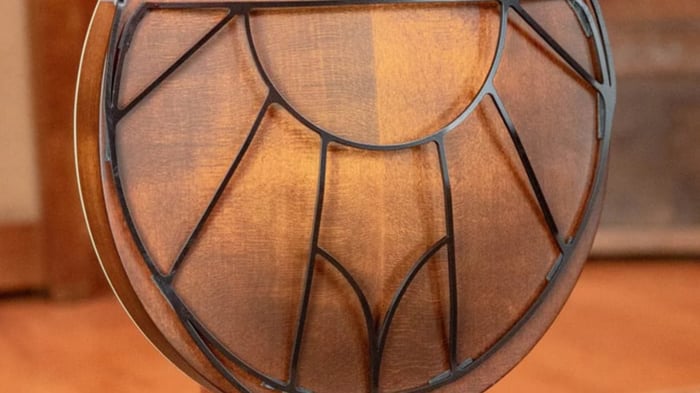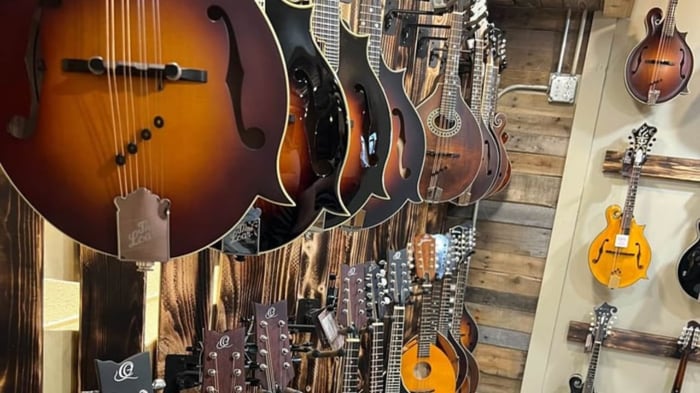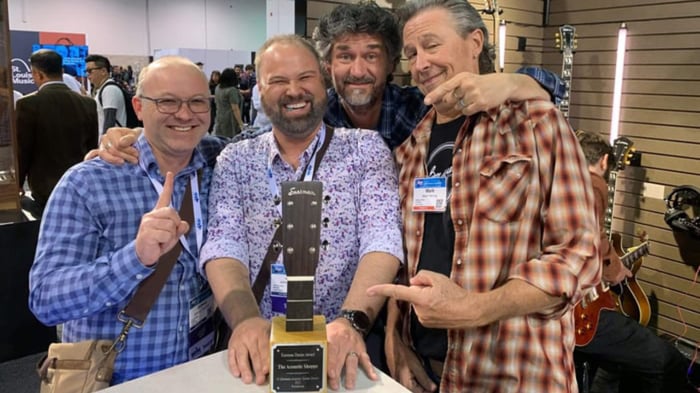Table of Contents
Tone-Gard: Your Instrument’s Secret Weapon?
Every acoustic musician is on a quest for better tone. We chase it with different picks, strings, and techniques, and sometimes we even buy a whole new instrument. But what if one of the most significant and immediate improvements you could make to your sound came from a simple, elegant accessory that costs less than a new set of tuners?
Enter the Tone-Gard. You may have seen this curious metal cage on the back of instruments played by professional musicians and wondered what it was. It’s not just for looks. This simple device might be the most effective and affordable upgrade you can make to your instrument. Let's dive into what a Tone-Gard is, how it works, and why we believe it’s one of the best accessories on the market.

What Exactly is a Tone-Gard?
A Tone-Gard is a specially designed frame that fits snugly on the back of your acoustic instrument—whether it’s a mandolin, acoustic guitar, or even an open-back banjo. They are precision-made from laser-cut steel and finished with a durable ceramic powder-coat. The core purpose of the design is to create a critical air gap, usually about half an inch, between the back of the instrument and your body.
Of course, protecting your instrument is paramount. All points that come in contact with your instrument are cushioned with soft rubber and leather pads. On the newest standard models, these pads are securely glued on to prevent them from getting lost. The only maintenance required is an occasional wipe-down and applying a little instrument wax to the rubber pads to keep them in top shape, and they can be easily replaced if they ever wear out. It’s a simple concept, but the results are anything but.
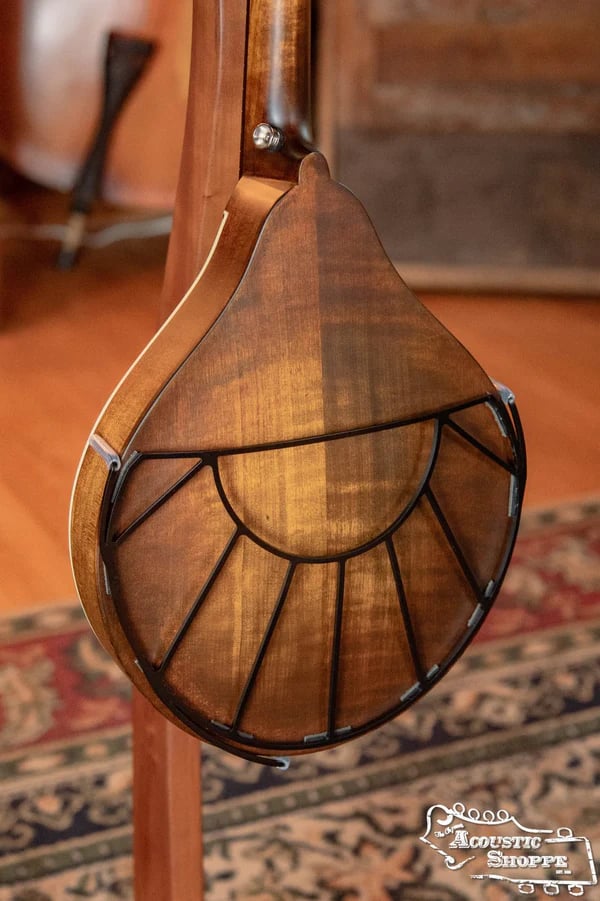
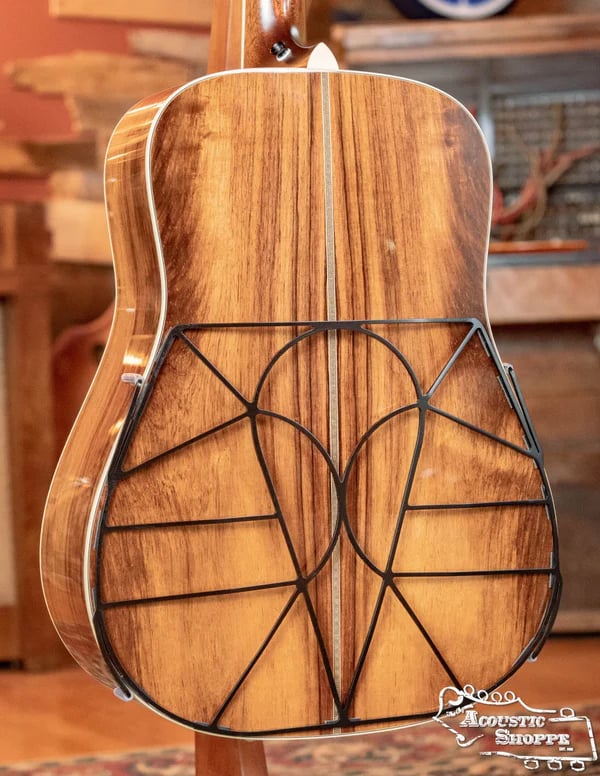
How Do They Improve Sound?
The magic of the Tone-Gard lies in basic acoustic science. An acoustic instrument produces sound by vibrating. While we focus a lot on the top (or soundboard), the back of the instrument is also a crucial resonating surface. It acts like a diaphragm, vibrating and pushing sound waves out.
When you hold an instrument against your body, especially while standing, your stomach and clothing act as a mute. This is often called "damping." You are effectively stopping the back of the instrument from doing its job. This kills a significant amount of the instrument's volume, projection, and tonal richness.
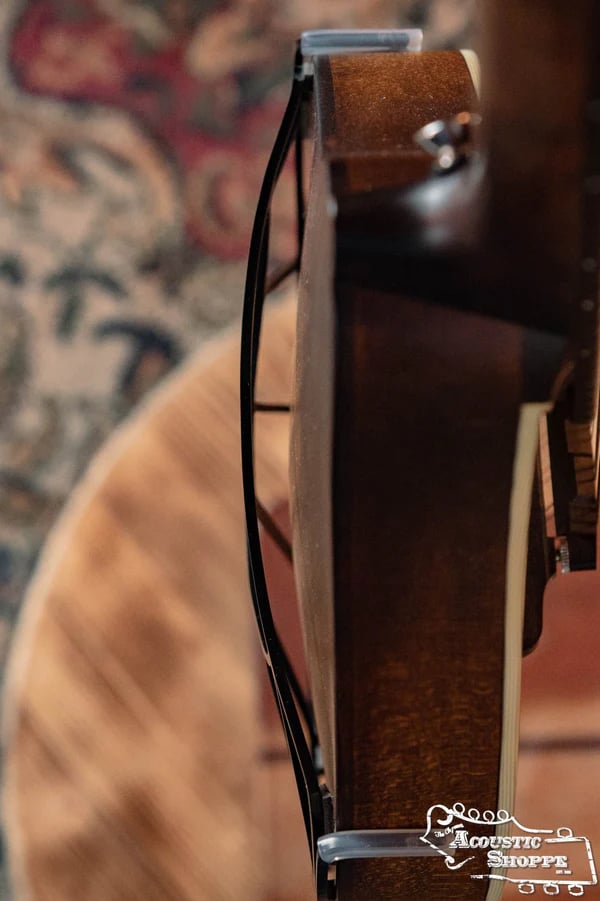
The Gard works by simply preventing this from happening. By creating that small separation, it allows the back of the instrument to vibrate freely, just as the builder intended. The result is a dramatic increase in:
Volume and Projection: The instrument is instantly louder and cuts through a mix more effectively.
Resonance and Sustain: Notes ring out longer and with more complexity. The entire body of the instrument can resonate together.
Tonal Quality: Many players report a deeper, fuller, and woodier tone, as the full voice of the instrument is unleashed.
Think about it: when you play sitting down, the instrument is often angled away from your body, allowing it to ring out. The Tone-Gard gives you that same tonal freedom even when you're standing and playing with a strap.
Tone-Gard Mandolin - Deco

$79.99
The Tone-Gard™ is designed to isolate the back of a mandolin (or any similar instrument) from the player's body, producing more volume and enhancing the tone. You can test the concept right now without a Gard. Play your instrument normally,… Learn more...
But Does It Actually Work?
This is the number one question we get, and the answer is a resounding yes. While some online tests with microphones show a subtle difference, the experience for the player is anything but subtle. The moment you put a Tone-Gard on, you can feel the instrument come alive in your hands.
But you don’t have to just take our word for it. In a popular discussion on the Mandolin Cafe forum where players ask "do they really work?", musicians consistently rave about the immediate and noticeable improvement in their instrument's sound.
We've tested this countless times in the shop. A player will be trying out a mandolin, and we'll clip a Gard on the back. Their eyes go wide. The increase in perceived volume and the richness of the tone is immediate. In a jam session, it can be the difference between being heard and getting lost in the mix. We’ve had customers take a new guitar with a Tone-Gard to a jam, only to have their bandmates ask them to turn down because the guitar was suddenly so much louder!
You can also check out our video below, which has over 25,000 views. Read the comments from people who have actually tried them.
Who is a Tone-Gard For?
While any player can benefit, a Tone-Gard is especially essential for certain musicians:
Performing Musicians: If you play on stage with a strap, this accessory is a non-negotiable. It ensures your instrument is always producing its maximum volume and best tone.
Jam Session Players: Guitar and mandolin players often struggle to be heard in a loud acoustic jam.They give you a significant volume boost without having to play harder, allowing for more dynamic and articulate playing.
Players Who Want to Protect Their Instrument: The Gard does more than just help your tone. It’s an excellent shield against scratches from belt buckles, shirt buttons, and snaps. It also protects the instrument’s finish from sweat, which is especially important during hot outdoor festivals.
Mandolin Players: Mandolins are often headstock-heavy, meaning the player has to support the neck with their fretting hand. The slight additional weight of the Tone-Gard on the body helps balance the instrument, making it more comfortable to play.
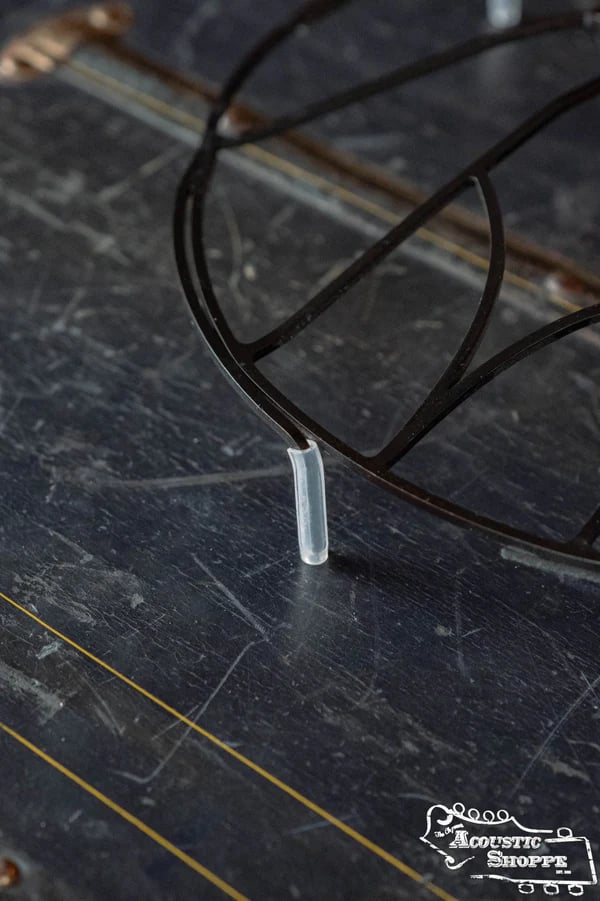
Are There Any Downsides?
No accessory is perfect for everyone, but the drawbacks to the Tone-Gard are minimal.
Weight: On a guitar, you will notice the added weight. It’s not significant, but it does change the feel slightly. Most players find the tonal benefits far outweigh this minor change, no pun intended.
Finish Contact: A common concern is whether it will damage the instrument’s finish. The modern Gards are extremely well-designed with soft leather and surgical tubing at all contact points. While it's possible for any accessory to affect a delicate finish over long periods, we have not seen any issues with modern Tone-Gards when used properly. For players with vintage instruments, it’s a trade-off: the Gard provides excellent protection from buckle rash, which is far more damaging.
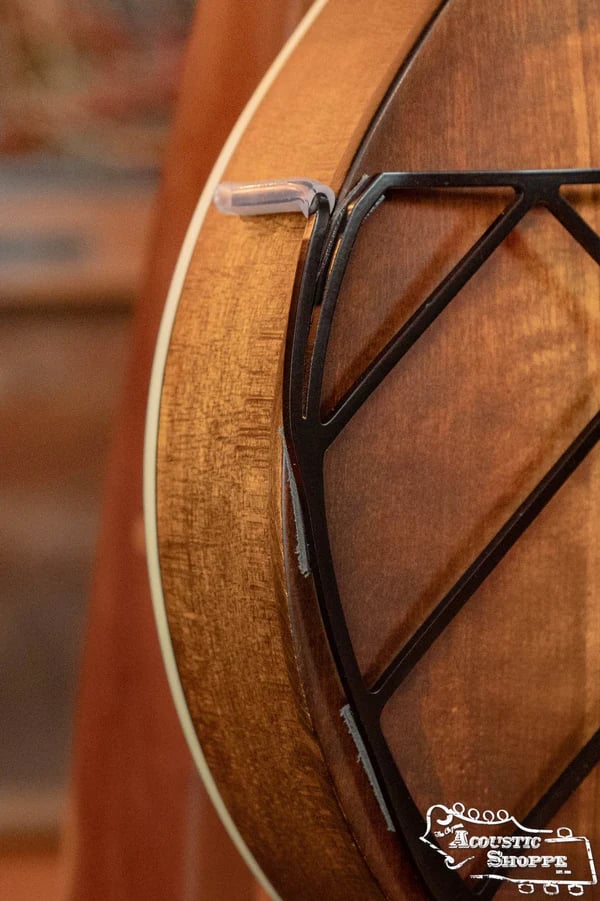
Ready to Unleash Your Instrument’s True Voice?
We are huge fans of these because they offer a real, tangible improvement to your sound for a very modest investment. It’s an upgrade you can hear and feel instantly, and it can be easily swapped between instruments.
If you’re ready to hear what your mandolin or guitar is truly capable of, we invite you to shop our collection of Tone-Gards. Stop muting your instrument and let its full voice ring out!
Find out why The Acoustic Shoppe is the mandolin store for your needs.
Acoustic Shoppe FAQ
Which Tone-Gard model will fit my mandolin?
Finding the right fit is crucial, and it's based on the width of your mandolin's back.
SunriseGards & DecoGards: These models fit the vast majority of modern F-style and A-style mandolins based on classic Gibson dimensions. This includes most mandolins from builders like Collings, Eastman, Northfield, Weber, Gilchrist, and many more with a back width of approximately 9-7/8 inches.
VintageGards: This model is specifically for wider-bodied mandolins, such as vintage Gibson round-hole A-models, which are typically 10-3/16 inches across. It's important to choose this model if you have a wider instrument and not try to bend a standard Gard to fit, as this can damage the Gard and not fit securely. When in doubt, measure the widest point on the back of your mandolin.
Will a Tone-Gard damage my instrument's finish?
This is one of the most common concerns, and understandably so! Tone-Gards are designed to be as instrument-friendly as possible, with soft leather pads and tubing at all contact points. For modern catalyzed finishes (like lacquer or polyurethane), the risk of marking is extremely low as long as the pads are kept clean. Any minor scuffing that might occur over years of use can typically be buffed out.
The main exception is for very delicate finishes like French polish or shellac. These finishes are so soft that even contact with a shirt can leave an impression. In these cases, a Tone-Gard will drastically reduce scratches and moisture damage compared to having no protection, but it may still leave minor contact marks.
Can the Tone-Gard stay on my instrument inside its case?
Yes, absolutely. The slim profile of the Tone-Gard only adds about 3/8" to 1/2" to the instrument's depth, allowing it to fit inside almost all hardshell cases, including Calton cases. In fact, we recommend leaving it on full-time. This minimizes the chance of scuffing the instrument's sides from repeatedly taking it on and off.
What instruments are Tone-Gards available for?
While they are most famous in the mandolin world, Tone-Gards are made for a wide variety of instruments. The most common models include:
Mandolin: Standard Sunrise, Deco, and Vintage models for A-style and F-style mandolins.
Mandola: Custom models available for Gibson H-series mandolas.
Octave Mandolin: The OM-Gard fits A-style octave mandolins.
Guitar: The D-Gard is designed for Martin-style dreadnought guitars.
Banjo: B-Gards are available for both 11" and 12" open-back banjos.


